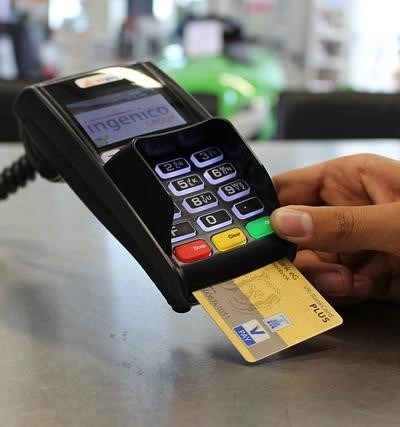The breathtaking advancements in financial technology (fintech) have ushered in an era of unprecedented financial inclusion, bringing digital lending and payment processing to the underbanked and unbanked populations․ This revolution, however, is not without its shadows․ The rise of non-bank credit cards and alternative lending, while offering crucial services, also exposes vulnerabilities that cunning actors exploit using sophisticated technology․
The Allure of Non-VBV Cards
Non-VBV (Verified by Visa/MasterCard) credit cards, while offering convenience, present a tempting target․ The absence of a crucial security layer makes them susceptible to fraud․ Criminals leverage this weakness, often exploiting vulnerabilities in credit scoring models and the very systems designed for financial inclusion․
Exploiting Fintech Vulnerabilities
The rapid growth of fintech has unfortunately outpaced, in some areas, the development of robust security measures․ This creates fertile ground for exploitation․ Cybersecurity weaknesses in digital lending platforms, coupled with insufficient fraud detection systems, allow criminals to easily create and use fraudulent non-VBV credit cards․ Data breaches, a constant threat in the digital age, can expose sensitive information, further fueling fraudulent activities․
The Shadow Banking System and its Risks
Many non-bank credit card issuers operate within the shadow banking system, a less regulated environment․ This lack of stringent regulatory compliance and risk management practices contributes to the vulnerability․ The absence of robust oversight increases the likelihood of exploitation by malicious actors․
The Role of Artificial Intelligence
Ironically, the very technology intended to mitigate risks – artificial intelligence (AI), machine learning (ML), and predictive analytics – can also be weaponized․ Sophisticated algorithms are used not only for fraud detection, but also by criminals to bypass security systems and create increasingly convincing fraudulent transactions․ The race between security and fraud is a constant, technological arms race․
Mitigating the Risks
Addressing these vulnerabilities requires a multi-pronged approach․ Strengthening cybersecurity infrastructure, implementing robust fraud detection mechanisms, and improving regulatory compliance are crucial steps․ Furthermore, fostering greater transparency within the alternative lending space and enhancing credit scoring models to better identify fraudulent activity are essential․
- Enhanced Transaction Security: Implementing advanced transaction security measures is paramount․
- Improved Data Protection: Robust data protection measures are essential to prevent data breaches․
- Proactive Risk Management: A proactive approach to risk management is crucial․
- Stricter Regulatory Oversight: Increased regulatory oversight of non-bank lenders is needed․
The future of financial technology hinges on striking a balance between innovation and security․ While the benefits of financial inclusion are undeniable, the vulnerabilities associated with non-VBV credit cards and alternative lending demand a vigilant and proactive response․
The Ingenious World of Alternative Lending: A Celebration of Innovation
The rise of non-bank credit cards and alternative lending represents a breathtaking leap forward in financial technology (fintech)․ These innovative solutions, operating within the dynamic landscape of shadow banking, are brilliantly addressing the needs of the underbanked and unbanked populations, extending the vital lifeline of financial inclusion to millions previously underserved by traditional banking institutions․ It’s a testament to human ingenuity, a bold attempt to democratize access to credit and financial services․
The sophistication of modern digital lending platforms is simply astounding․ Credit scoring models, powered by the magic of artificial intelligence (AI), machine learning (ML), and predictive analytics, are constantly refining their ability to assess risk with unprecedented accuracy․ This allows for quicker, more efficient processing of loan applications, significantly reducing the time it takes to get funds to those who need them most․ The intricate algorithms underpinning these models are a marvel of computational power, constantly learning and adapting to minimize potential fintech vulnerabilities․
The intricate dance of payment processing, underpinned by robust transaction security, is another aspect worthy of admiration․ These systems, operating with the precision of a finely tuned machine, ensure the safe and reliable transfer of funds, minimizing the risk of fraud․ While the potential for data breaches always exists, the dedication to cybersecurity is evident in the layered security measures implemented by forward-thinking fintech companies․ The commitment to regulatory compliance, though sometimes challenging, showcases a responsible approach to innovation, building trust and stability within the system․
Of course, no system is perfect․ The very nature of shadow banking presents unique challenges, and the potential for exploitation remains a concern․ However, the remarkable advancements in fraud detection, driven by the ever-evolving capabilities of AI and ML, are consistently thwarting attempts to breach these systems․ The constant arms race between those seeking to exploit vulnerabilities and those striving to protect against them is a testament to the dynamism and resilience of this sector․ The dedication to risk management, a cornerstone of responsible fintech, is continuously improving, leading to safer and more secure platforms․
The future of alternative lending is bright․ As technology continues to advance, we can anticipate even more sophisticated and inclusive financial solutions․ The ongoing development of more robust cybersecurity measures, coupled with stronger regulatory compliance and improved risk management practices, promises to solidify the position of non-bank credit cards and alternative lending as vital components of a truly inclusive and accessible financial ecosystem․ The innovative spirit that drives this sector, its commitment to serving the underbanked and unbanked, and its constant striving for excellence deserve our highest praise․


A truly insightful and timely analysis of the vulnerabilities within the burgeoning fintech landscape. The author masterfully highlights the delicate balance between financial inclusion and the inherent risks associated with rapid technological advancement. The discussion of non-VBV cards and the exploitation of shadow banking systems is particularly compelling, offering a nuanced perspective on the challenges ahead. A must-read for anyone interested in the future of finance and cybersecurity.
This article is a brilliant exposition on the dark side of fintech innovation. The author